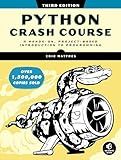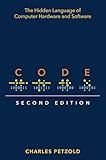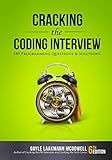Best Programming Books to Buy in December 2025

Beginner's Step-by-Step Coding Course: Learn Computer Programming the Easy Way (DK Complete Courses)



Python Crash Course, 3rd Edition: A Hands-On, Project-Based Introduction to Programming



Everything You Need to Ace Computer Science and Coding in One Big Fat Notebook: The Complete Middle School Study Guide (Big Fat Notebooks)



Code: The Hidden Language of Computer Hardware and Software



Cracking the Coding Interview: 189 Programming Questions and Solutions
- EASY-TO-READ FORMAT FOR QUICK, EFFECTIVE STUDYING ON THE GO.
- COMPACT DESIGN FITS PERFECTLY IN YOUR TRAVEL BAG.
- GOOD CONDITION ENSURES RELIABLE RESOURCE FOR CAREER PREP.



The Pragmatic Programmer: Your Journey To Mastery, 20th Anniversary Edition (2nd Edition)


In Julia, you can return a new instance of a type by simply creating a new object of that type inside the function and then returning it. For example, you can define a type called MyType with a constructor function new_instance that creates a new instance of MyType and returns it:
struct MyType value::Int end
function new_instance(x::Int) return MyType(x) end
You can then call the new_instance function with an integer argument to create a new instance of MyType. For example, new_instance(5) will return a new instance of MyType with a value of 5.
How to return a new instance by applying a function to the attributes in Julia?
In Julia, you can return a new instance by applying a function to the attributes by defining a method for the Base.copy function. Here is an example of how to achieve this:
mutable struct MyType a::Int b::String end
function Base.copy(obj::MyType) return MyType(obj.a * 2, string(obj.b, obj.b)) end
original = MyType(5, "hello") new_instance = copy(original)
println(new_instance)
In this example, we define a custom copy method for the MyType struct, which creates a new instance of MyType by applying a function to the attributes of the original instance. In this case, we are doubling the value of a and concatenating the value of b with itself.
When we call copy(original), it returns a new instance with the transformed attributes.
How to return a new instance with updated values in Julia?
In Julia, you can create a new instance with updated values by using either the setfield!() function or by creating a new object with updated values using a constructor method.
Here is an example of using setfield!() to update values of an object:
mutable struct MyStruct a::Int b::String end
my_obj = MyStruct(1, "hello")
new_obj = deepcopy(my_obj) setfield!(new_obj, :a, 2) setfield!(new_obj, :b, "world")
println(new_obj) # MyStruct(2, "world")
Alternatively, you can define a constructor method in the struct to create a new object with updated values. Here is an example:
mutable struct MyStruct a::Int b::String
function MyStruct(a::Int, b::String)
new(a, b)
end
end
my_obj = MyStruct(1, "hello")
new_obj = MyStruct(2, "world")
println(new_obj) # MyStruct(2, "world")
Both methods will create a new instance with updated values in Julia.
How to return a new instance with a different data type in Julia?
In Julia, you can return a new instance with a different data type by explicitly converting the data type during the creation of the new instance.
For example, if you have a function that returns an instance of type Float64 and you want to return an instance of type Int64 instead, you can use the convert function to convert the data type:
function return_int_value() float_value = 3.14 int_value = convert(Int64, float_value) return int_value end
new_instance = return_int_value()
In this example, the convert function is used to convert the float_value from Float64 to Int64 before returning it as the new instance.
How to return a new instance without copying data in Julia?
To return a new instance without copying data in Julia, you can use the pointer function to create a new object that shares the data of the original object. Here is an example:
function new_instance_without_copying(data) ptr = pointer(data) new_instance = unsafe_wrap(Array, ptr, size(data)) return new_instance end
original_data = [1, 2, 3, 4, 5] new_instance = new_instance_without_copying(original_data)
In this example, the new_instance_without_copying function takes the original data as an argument and creates a new object new_instance that shares the data of the original data without making a copy. You can then modify new_instance without affecting the original data.
How to return a new instance of a subtype in Julia?
You can return a new instance of a subtype in Julia by creating an object of that subtype using the subtype constructor. Here is an example:
abstract type Animal end
struct Dog <: Animal name::String end
struct Cat <: Animal name::String end
function create_dog(name::String) return Dog(name) end
function create_cat(name::String) return Cat(name) end
dog = create_dog("Buddy") cat = create_cat("Whiskers")
println(dog) println(cat)
In this example, we have defined two subtypes Dog and Cat that are subtypes of the abstract type Animal. We then have functions create_dog and create_cat that create new instances of Dog and Cat respectively. Finally, we create new instances of Dog and Cat by calling these functions with the appropriate arguments.
How to return a new instance in Julia using a constructor?
In Julia, you can create a constructor for a type by defining a function with the name new that takes in the necessary arguments and returns a new instance of the type. Here's an example of how to create a constructor for a type MyType:
struct MyType x::Int y::Int
function MyType(x::Int, y::Int)
new(x, y)
end
end
In this example, the MyType struct has two fields x and y, and we define a constructor for MyType that takes in two arguments x and y and returns a new instance of MyType with the given values.
You can create a new instance of MyType using the constructor like this:
obj = MyType(10, 20)
Now obj is a new instance of MyType with x set to 10 and y set to 20.
